Cloud Family History & Genealogy
Cloud Last Name History & Origin
AddHistory
We don't have any information on the history of the Cloud name. Have information to share?
Name Origin
We don't have any information on the origins of the Cloud name. Have information to share?
Spellings & Pronunciations
We don't have any alternate spellings or pronunciation information on the Cloud name. Have information to share?
Nationality & Ethnicity
We don't have any information on the nationality / ethnicity of the Cloud name. Have information to share?
Famous People named Cloud
Are there famous people from the Cloud family? Share their story.
Early Clouds
These are the earliest records we have of the Cloud family.

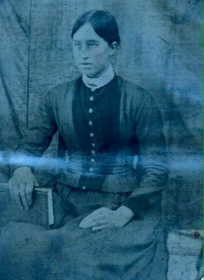

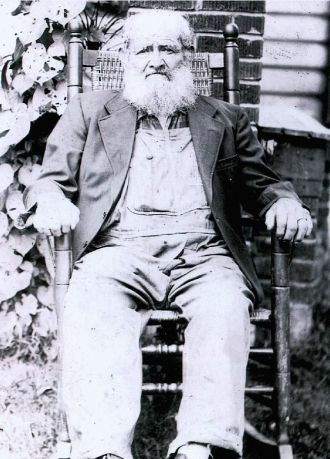

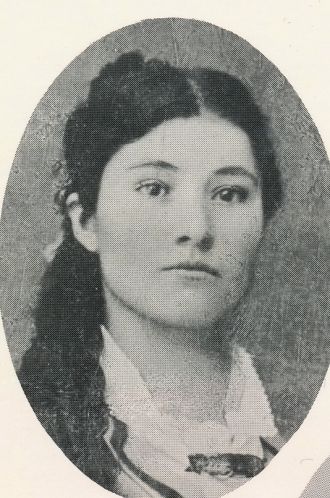
Cloud Family Members
Cloud Family Photos
Discover Cloud family photos shared by the community. These photos contain people and places related to the Cloud last name.

Does anyone have any other photos of her, or does anyone recognize this photo as their relative?

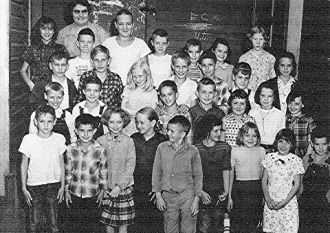
2nd Row: Paul Cox, Millard Pace, Lonnie Thomas, Jerry Cloud, Joyce Cloud, Jane Aubrey Pace, Doris Cloud
3rd Row: Larry Presley, Lewis Solo, Lana Solo, Coy Jones, Larry Cloud, Callie Cornet, Laquata Thomas
4th Row: Beatrice Jessie, Mrs. Cusick, Arthur Grant Pace, Alan Jones, ? Alben Jones, Christine Fultz, ?

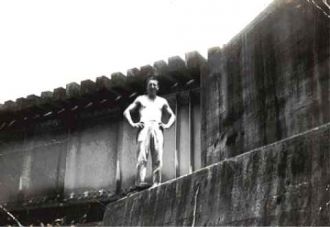

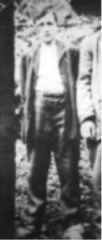

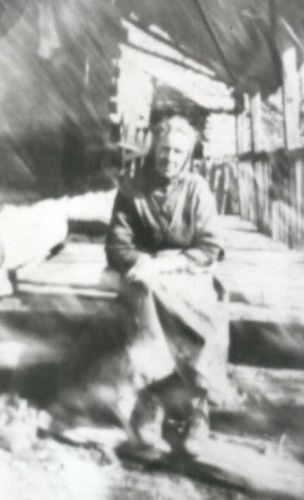
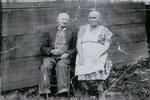
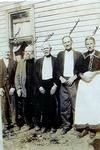
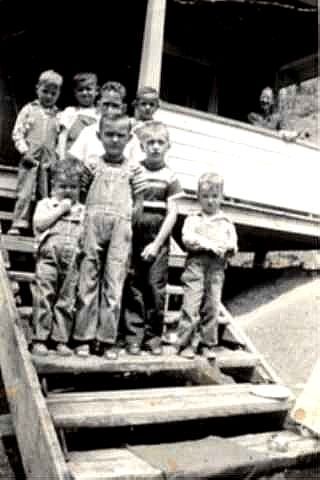

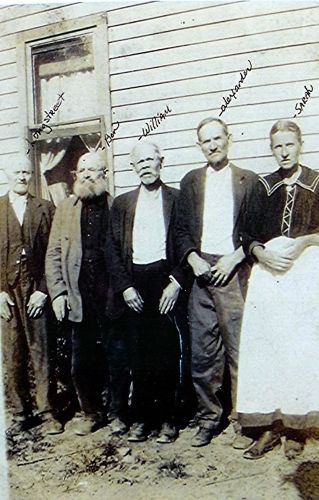
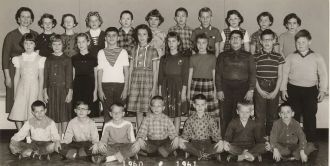
I did a web search for a Garrison School in Kansas or Oklahoma and there seem to be several. I have written to one. There are also others across the US and Canada. I can't guarantee which one it might be. If anyone can tell me, I would be delighted. I hope the names will give a clue to someone. Also, it may be in the same district or county as a “Cleaveland School” which is mentioned on one of the class photos.
as above
People in photo include: Dennis Butler, Jim Kirk, Scott Williams, Robert Moorhouse, John Parsons, Brad Clark, David McKenna, Debbie Perkins, Vicki Parsons, Hazel Lash, Greg Heckman, Bonnie Dickeson, Frances Kaelson, Joan Herd, Courtney Stevens, Allan Dunlap, Gordon Mills, Linda Dennis, Dianne Stigers, Patsy Stauffer, Ronnie Driver, Diana Cloud, Mark Meinecke, Kim Dumford, Cheryl McCune, Susan Elam, and Judy Wallace
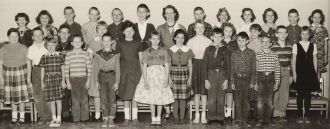
I did a web search for a Garrison School in Kansas or Oklahoma and there seem to be several. I have written to one. There are also others across the US and Canada. I can't guarantee which one it might be. If anyone can tell me, I would be delighted. I hope the names will give a clue to someone. Also, it may be in the same district or county as a “Cleaveland School” which is mentioned on one of the class photos.
as above
People in photo include: Shirley Butler, Jerome Smith, Dick Merrill, Mary Ballou, Berry Stafford, Ronnie Sloan, Paul Morris, Sharon Hilton, Kenneth Delaney, Greg Bell, Joan Frank, Pam Hartman, Deanna Laughary, Pamela Reid, Jane Shimfessel, Freddie Hines, Elizabeth Kaelson, Jackie Rice, Anita Dunlap, Jerry Tatum, Frankie Morrison, John Wainscott, Frank Herndon, Fred Cloud, Janice Forney, Judy Gooding, Cindy Farha, Don Sailing, and Phyllis Heckathorn

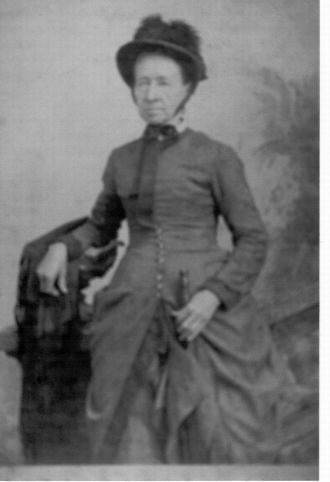
[Photo shared in 2002 by Chuck Cloud, Jr. [contact link]] .
This photo of Nancy was possibly taken in the late 1800's.
People in photo include: Nancy A Cloud
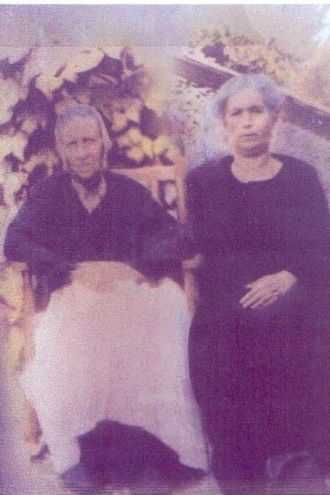
People in photo include: Sarah J Cloud and Martha Blevins


Cloud Family Tree
Discover the most common names, oldest records and life expectancy of people with the last name Cloud.
Updated Cloud Biographies


Popular Cloud Biographies



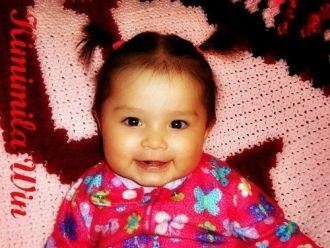





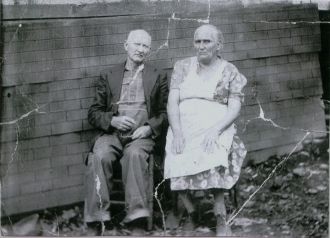
Cloud Death Records & Life Expectancy
The average age of a Cloud family member is 71.0 years old according to our database of 4,993 people with the last name Cloud that have a birth and death date listed.
Life Expectancy
Oldest Clouds
These are the longest-lived members of the Cloud family on AncientFaces.
Other Cloud Records
Share memories about your Cloud family
Leave comments and ask questions related to the Cloud family.
 Portia Cloud-Banach
Portia Cloud-Banach  Portia Cloud-Banach
Portia Cloud-Banach Every year after Thanksgiving, the church would start the Christmas Play rehersals. The play would be preformed the Saturday night before Christmas. The Sunday before Christmas the worshipers would set a record with their numbers attending sunday school and morning services. Why? Because everyone would receive a paper bag full of treats for Christmas. These treats were always in the form of food and sweets.
Each child would line up to get their "poke" (grocery store paper bags) full of treats. Inside would be an orange, apple, gum, christmas candy, hard and soft, and lots of little store bought food items. After all the children got their "pokes" full of goodies the adults lined up and received the same. That would be the only time my family got an orange.
We didn't have money for presents. We celebrated the true meaning of Christmas with our Nativity Play, and our presents were the food items in our poke bag. We never knew what we were missing, we didn't have a tv until the late 50s. The commercials did not bombard children with what they must have for Christmas.
 Portia Cloud-Banach
Portia Cloud-Banach I also loved to be outside in the sunshine. I remember smells and sounds like they are pictures in my mind. Just laying down on the ground and closing your eyes you could feel the warm sun on your body and hear the bees buzzing around, their wings flaping double time. I was afraid of bees. Papow Cloud had beehives for honey. Everytime he raided their hives, the bees were mad for a few days and would fly around looking for a human to sting even yards away at my house (which was down the dirt road with yelling distance). There were lots of different kinds of bees. There were wasps that built dirt homes under the eves of our house, the barn, hog lot, just about any wooden structure. There were yellow jacksets that built their homes in the ground and in bushes and trees. The wasps built their paper homes usually around wood structures. There were big large bumble bees that were yellow and black that never bothered anyone. My dad always told us to not bother the bees and they wouldn't bother us. Dad respected all of God's creatures as they had a job to do in the scheme of things. The bees were necessary to polinate the garden, the trees, the flowers, all growing fruit and all things that had flowers.
While lying on the ground you also could hear the flies dronning, and other flying insects. We loved to catch June bugs and tie a string to one of their legs, this way we could give them a long string so they could till fly around near us. Crawling insects and spiders could be heard rusling through the grass if you were laying down on the ground. My favorite was listening to the birds singing and trying to recognize the type bird. There were robbins, pheasants, mawking birds, woodpeckers, hawks and buzzards, too many to list.
The smell of warm sunshine made the heart sore. The smell of the earth when it was damp from a rain was a different smell from the earth hot from the summer sun. Grass and weeds underneath and surrounding me as I sat or lay on the ground was a comforting smell. Everything had a special smell from the wild fruit, flowers, trees in bloom.
There were the smells from the animals too. We always had dogs. They were for hunting. They were valuable for finding rabbits, and squirrels for food and the dogs could smell a snake before any human could, so they were also for protection in the woods. Dogs were not to be petted as that would disrupt their inbred jobs. When dad was not around we did treat the dogs like family. Mom would never let them in the house. Dogs got to eat the scraps from the meals we ate. The cow was important as it gave us our milk and butter. They had their own special smell. Mostly their smell was an earthy smell from lying on the ground and the milk smell. They were very sloppy eaters with their mouths dripping juices from whatever they ate whether it was an apple or weeds. The cow was special because they ate store bought food. The feed came in large cotton bags that had nice patterns. The bags were used to make clothes, curtins and even quilts. I loved the smell of the feed. It smelled good enough to eat and I did try it. The chickens had their own special place. Daddy always had chicken coops for them. Their coops had roofs and four sides with an opening big enough for us to enter. There would be tree branches without their leaves for roosting and some spots that had bottoms with grass for chickens to sit and lay their eggs. There were small little enclosed coops for the hens that were sitting on the eggs to hatch them. The chickens picked every blade of grass in their area until there was nothing but dirt and their dung. The chicken feed would be thrown around on the ground for them to eat, usually dried corn. The smell from their dung was terrible and when collecting eggs you had to wat where you were stepping.
We had a barn that daddy built across the dirt road from our house which set on the side of the mountain. The barn was between the road and the creek. The barn had its own smells. There was a door in the middle of the rectangle shaped barn. Upon entering you walked onto a dirt floor. There were enclosed areas on both sides, with a wooden half wall about three foot and gateto keep the animals enclosed. Usually in the wintertime the cow and mule stayed in these pens. Straight ahead was a step up to the wooden floor of the barn. There was an opening in the wall on the right side where you could into one of the pens. Here was where daddy kept his tools, plow, mule halters and reins. This is where he kept everything that didn't belong in the house, his stuff. There would be corn piled into a corner waiting for it to dry and be ground into corn meal for cornbread or left whole to feed the pigs or cows. There were his tools he needed to kill the hogs in November for food. He had special tools for shoeing horses and mules. He made extra money shoeing other peoples horses or mules and he ground corn into meal for people. The smells of the barn were earthy, moldy, metal, corn, cows feed, mouse droppings, old wood the building was made of, rusting tools and whatever oil needed for lamps, to keep tool sharp.
The creek had a life of its own. The creek bed was solid rock from the mountain with dirt, silt, pebbles at the bottom of the water with slippery moss growing on the wet rocks. There were tadpoles that swam around and eventually became frogs and moved onto land. There were small crayfish which we called "crawdads". Never go into the water barefoot unless you keep a watchful eye out for the crawdads, because their pinchers sure did hurt and they didn't let go until they decided to. There were tiny minnows that swam in the water. If anything disturbed the water the minnows would dart into the crevaces of loose rocks to hide. The minnows and the crawdads never grew large enough to eat. We never caught them because they were too fast. If someone was fast enought to catch the minnows they were usually put back into the creek water. There were also baby water snakes to watch out for.
If it was a very dry summer with no rain for a few weeks, the water in the creek would get very low and barely run. The mountains would be even dryer and animals and snakes would come down to the bottom of the mountains to find water. The animals were no problem but most of the smakes were poison and everyone had to be looking around when they were outside.
Most people in Stretchneck Holler had wells. We did not have a well and had to carry our drinking water from my daddy's parents house. They had a pump in their yard and we would fill up a couple of buckets every day for cooking and drinking. Water for bathing and washing clothes came from the creek. My mom had a small building next to the creek which held her washing machine, scrubb board and cleaning supplies. She carried water from the creek to fill up the washing machine.
The creek water was always very cold no matter how hot it got in the summer. Me, my brothers and cousins would go and set in the creek to cool off. Some bigger boys would dam up the creek in different places. The swimming hole could get pretty deep. The creek running down Stretchneck holler had a crisp clean smell and tasted delicious.
At first my mother was very protective of me and watched over me like a hawk and would pick me up every time I fell. My father's sister Lola could see the consequences of mom's love and protectiveness of me. She told mom to let me get up on my own and let me do whatever I wanted to try to do. Lola told mom that she would not be around to always pick me up and I needed to become a tough little girl to be a strong and independent woman.
So I became a hard headed, stubborn little girl who was never told that I could not do anything I wanted to try to do. I could do more chin ups, as my dad held up the broomstick, than my brothers, Roger, Tony and Donnie. If they were going to play follow the leader I was right there.
The best memories are of the summers. There were long lazy days with the bees dronning, birds singing, frogs croaking, the creek humming. My father's sister lived at the bottom of the holler, Pauline Grubbs. My cousins and me and my brothers were like one big family. We used to go to the mountains and spend most of the day playing explorers or indians. My dads Grandfather was 1/2 Cherokee Indian. We would take a mason jar and pump water until it ran ice cold as ice from my father's parents pump in the front yard. Fill up the mason jar. Make us some bologna sandwiches or peanut butter and jelly sandwiches and off we would go.
We would have sticks for shot guns and bow and arrows. Arrows were sticks with bird feathers on the end. We would look for flint, gensing, wild strawberries, blackberries, & rasberries. In the fall we would take buckets and go into the mountains and collect black walnuts, apples and pears.
We would walk the rim of the mountain on the left side of the holler or the right side of the holler. We never went over the top of the mountain because we would get lost.
We had a garden on top of the left side of the holler. We grew most of our food and canned it for eating in the winter months. Green beans would be strung on a heavy string with a hugh needle and hung in the smoke house or barn until they dried. Some string beans were canned. Tomatoes were canned and so was tomato juice. Corn was cut of the cob and fried in butter and canned. Even the apples were cut up blanched and canned. My grandmother Leona Presley Cloud could make the best applesauce stack cake you ever tasted. We had milk and butter from our cows and eggs from our chickens. Honey was collected from my grandfather Tilman Cloud's bee hives. We had pigs which we fattened up and slaughtered in november and had all the meat we could eat all winter. I really never saw a steak the 13 years we lived in Stretch Neck Holler. On occasion we would get to have pop and hamburgers from the grocery store in Evarts.
During the rainy times we would play either in the barn or under the house in the dirt. Thats probably why we ended up with worms in our stomachs. Thats another story for later.
Followers & Sources


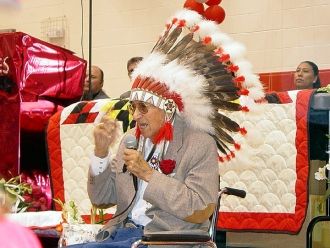
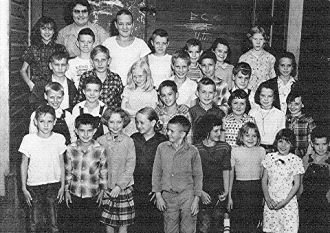
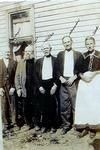


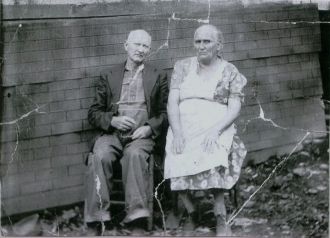
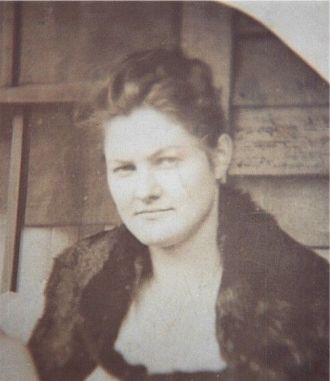
1/2 cup Molasses or sorghum syrup
1 cup sugar
2 eggs at room temperature
1/4 cup buttermilk at room temperature
6 cups all purpose flour
1 tsp. baking soda
1 tsp. ground cinnamon
FILLING:
1 lb apples, peeled, cored and thinly sliced
1/2 cup water
1 cup sugar
1/4 tsp. ground cinnamon
1/8 tsp. ground allspice
FILLING: Combine the sliced apples and water and bring to a boil. Reduce the heat to low, cover and simmer until the apples are soft and the water has evaporated, about 25 minutes depending on the type of apple you are using. Remove from heat. Mash the apples with the back of a fork and fold in the sugar, cinnamon and allspice. Return the pan to medium-low heat and simmer, stirring occasionally, until the sugar has dissolved and the mixture is thick , about 20 minutes. Set aside to cool.
CAKE: Preheat oven to 350 degrees.
In a large bowl, combine the butter, molasses or sorghum, sugar and eggs. Using an electric mixer on medium speed, beat until light and fluffy, about 4 minutes. Add the buttermilk and blend well. In a separate bowl, sift together the flour, baking soda and cinnamon. Using a wooden spoon, fold the flour mixture into the creamed mixture until well blended. (alternate way of mixing is to make hole in flour mixture and pour in liquid a little at a time mixing with your hands like making bisquits)
Turn the dough out onto a lightly floured work surface. Divide dough into 10 equal round balls. Using the outline of an 8 inch round baking pan, draw a circle on waxed paper. Roll out 1 portion of the dough to fit the circle, then slide the dough circle and waxed paper into a baking sheet or you can use a cast iron skillet without the wax paper. Bake in the middle oven rack until golden brown, 12 to 14 minutes. Slide the cake onto a wire rack to cool, removing the waxed paper while still warm. Repeat with the remaining dough for a total of 10 baked rounds.
To assemble the cake, place one cooled round layer onto a serving dish and spread with 1 to 2 tablespoons of cooked apple filling. Continue to alternate apple filling and cake layer, ending with cake layer. Do not put apples onto the top layer. Cover tightly with plastic wrap and store at room temperature for up to two days before serving.
Yield: 15 Servings